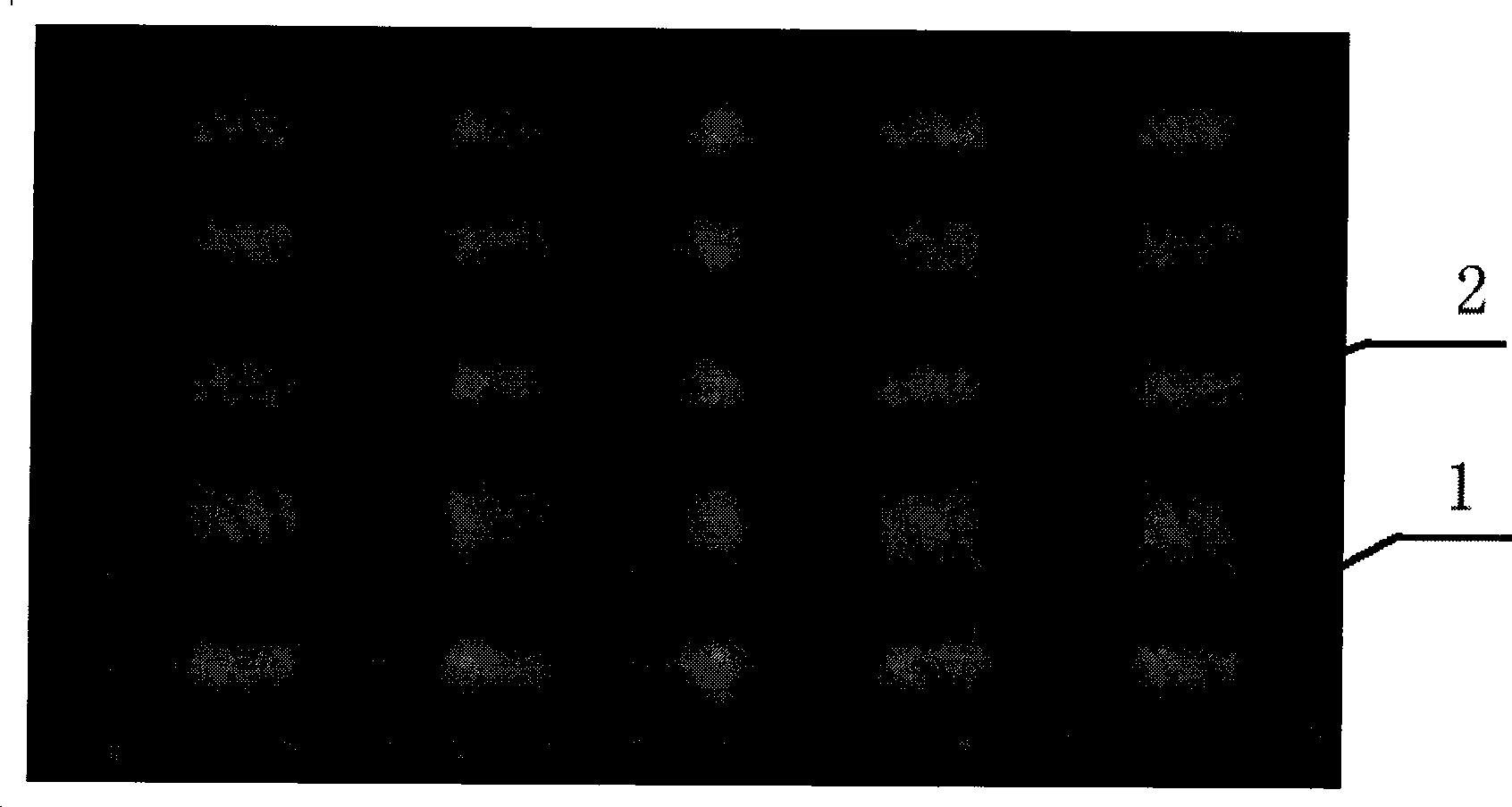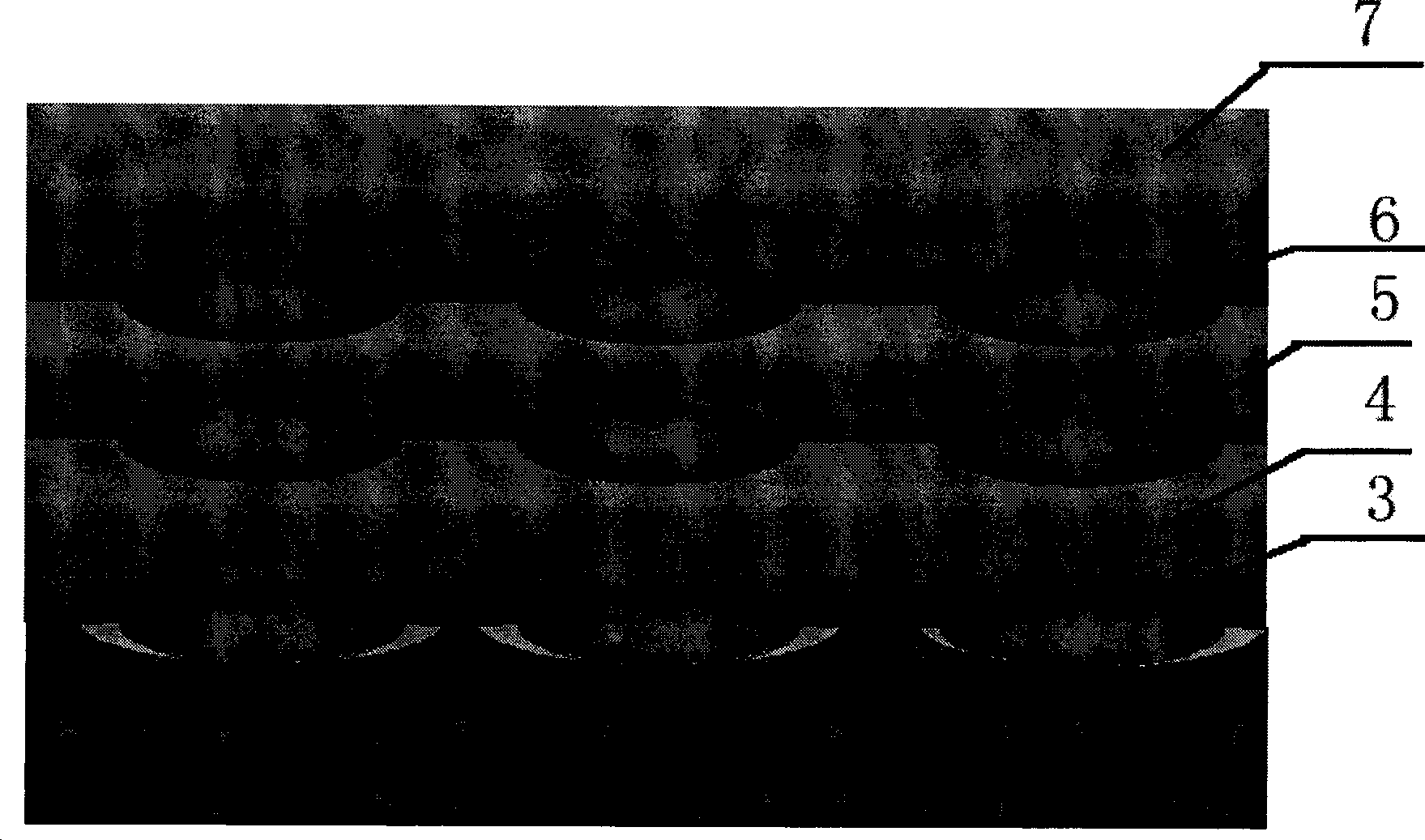MBE epitaxial method for positioning and growing low-intensity InAs quantum dot by strain engineering theory and pattern-underlay combining technology
A graphic substrate and strain engineering technology, applied in ion implantation plating, metal material coating process, coating, etc., can solve problems such as difficulty in obtaining microcavity structure and difficulty in single photon emitting devices
- Summary
- Abstract
- Description
- Claims
- Application Information
AI Technical Summary
Problems solved by technology
Method used
Image
Examples
Embodiment Construction
[0010] The invention is an MBE epitaxy method for positioning and growing low-density InAs quantum dots by adopting strain engineering principle and graphic substrate combination technology. Combination hint figure 1 and figure 2 illustrate:
[0011] 1. Using electron beam lithography (EBL) combined with wet / dry etching technology to prepare the required pattern (2) on the GaAs substrate wafer (1):
[0012] A. Choose EBL exposure time 50-65s;
[0013] B. H3PO 3 : H2O 2 :H 2 O is used as the corrosion solution, the corrosion temperature is 0°C, and the corrosion time is 3-5 minutes;
[0014] C. In order to control the pattern size, pattern spacing and corrosion depth of mesa / pit, dry etching uses Cl 2 、BCl 3 For etching gas, control the etching time to 2-4min;
[0015] 2. On the basis of successfully preparing the required pattern substrate, epitaxially grow the seed quantum dot layer (3);
[0016] Control the growth temperature of the seed quantum dot layer at 540°C...
PUM
| Property | Measurement | Unit |
|---|---|---|
| thickness | aaaaa | aaaaa |
| temperature | aaaaa | aaaaa |
| thickness | aaaaa | aaaaa |
Abstract
Description
Claims
Application Information
 Login to View More
Login to View More - R&D
- Intellectual Property
- Life Sciences
- Materials
- Tech Scout
- Unparalleled Data Quality
- Higher Quality Content
- 60% Fewer Hallucinations
Browse by: Latest US Patents, China's latest patents, Technical Efficacy Thesaurus, Application Domain, Technology Topic, Popular Technical Reports.
© 2025 PatSnap. All rights reserved.Legal|Privacy policy|Modern Slavery Act Transparency Statement|Sitemap|About US| Contact US: help@patsnap.com


